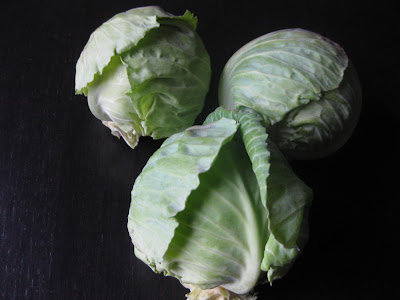My husband attended a conference last week. As you might have deduced from last week's lack of blog post, things kind of fall apart around here when that happens. As I lay in bed exhausted each night, I thought to myself, "What would happen if I were a single mom? Or if I worked full time, and not just this measly part-time job?" My exhausted self answered, "Well, for one thing, you wouldn't be doing the blog. And you'd either be eating crap every night or have to find the wherewithal to become much more organized." Honestly, I don't know if I could do it, though I know people do do it. Maybe I'd rise to the occasion if I were forced to.
I want to be honest about such things, because nothing is more discouraging than reading someone's blog and imagining that their life is so much happier, healthier, more productive, etc. than your own. The sad truth is that we live in a society that doesn't value happiness, healthiness, or productivity (real productivity) very much, and so if we want these things in our lives, it's a struggle. I will leave it for you to come to your own conclusions about why this is the case.
That said, I truly enjoy cooking, and it makes me happy to feed my family. So I will keep on struggling. Here's an easy recipe for a coconut-cashew sauce I concocted last week. (This sauce was wonderful, but the rest of the week was something of a bust, foodwise.) I served it on Asian rice noodles, and threw some cilantro, and assorted lightly steamed/raw vegetables on top. I also threw some tofu under the broiler for about 15 minutes, and had that with the sauce as well. The sauce is pure white, which along with the white rice noodles, creates a snowy background against which your brightly colored vegetables can shine. Appropriate for the month of March, I think. (At least if you live further north than I do.)
I didn't take any pictures. Sorry. Photography also fell by the wayside last week. Instead I included pictures of the Brussels sprouts and Brussels sprouts greens I rescued (with permission!) from an abandoned plot at my community garden last week. I felt sorry the plot's owner hadn't been able to keep it going. But I totally understood.
Snowy White Coconut Cashew Sauce
1½ cups raw cashews
1 can coconut milk
2 cloves garlic, roughly chopped
½-inch piece of ginger, roughly chopped
1 teaspoon salt
1 teaspoon dark sesame oil
Puree all ingredients except for salt and sesame oil in a blender until smooth. Pour into a bowl and stir in salt and sesame oil. Serve with cooked rice noodles, steamed/raw vegetables, and broiled tofu. Add a dash of soy sauce if you wish, and a squeeze of Sri Racha if you like it spicy.
*Did you catch the song reference in the post title? Check out the great Barrington Levy.
1 can coconut milk
2 cloves garlic, roughly chopped
½-inch piece of ginger, roughly chopped
1 teaspoon salt
1 teaspoon dark sesame oil
Puree all ingredients except for salt and sesame oil in a blender until smooth. Pour into a bowl and stir in salt and sesame oil. Serve with cooked rice noodles, steamed/raw vegetables, and broiled tofu. Add a dash of soy sauce if you wish, and a squeeze of Sri Racha if you like it spicy.
*Did you catch the song reference in the post title? Check out the great Barrington Levy.



























